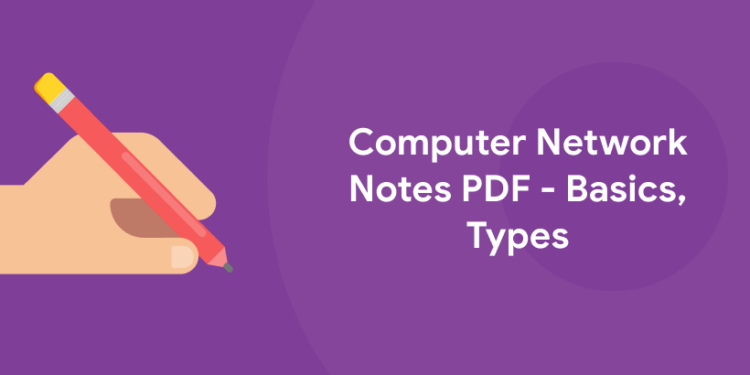Table of Contents
Computer Network is one of the most important topics for the preparation of competitive exams. In this article, we will be providing the aspirants with computer network notes along with the PDF download.
Prepare for various Government exams! Download Entri App!
Computer Network Introduction
A computer network is a communication system for linking computers/hosts.
- A computer network is a number of computers or nodes inter connected by some communication lines.
- Two computers connected to the network can exchange information with each other through the other nodes if they are not directly connected.
- Some of the nodes in the network may not be computers but network devices like switches, routers etc. to help with the communication.
Uses of the computer Network
- Exchange of data and information between different nodes or computers.
- Interconnect small computers can be used instead of large computers.
- Some technologies and applications are examples of Distributed system. (Railway reservation system, Distributed databases etc).
Advantages of Computer Network
1: Which of the following algorithms is most suitable for classification tasks?
- Better communication
- Better connectivity
- Better sharing of Resources
- Bring people together
Modes of communication
In an IPv4 network, the hosts can communicate one of the following three ways:
- Unicast– the process in which a packet is sent from one host to an individual host.
- Broadcast– the process in which a packet is sent from one host to all hosts in the network.
- Multicast– the process in which a packet is sent from one host to a selected group of hosts.
Prepare for various Government exams! Download Entri App!
Different Types of Computer Network:
Local Area Network (LAN)
- The term LAN refers to a regional network or a group of interconnected network that are under the control of the same administration.
- LANs consist of the following components:
- Computers
- Network interface cards
- Peripheral devices
- Networking media
- Network devices
MAN or Metropolitan Area Network
- MAN is a network that includes a town.
- The network consists of various buildings interconnected via fiber optics backbones or are wireless.
- A MAN is a large computer network that usually covers a city or a large campus.
- A MAN usually interconnects a number of LANs with technology, such as fiber optical links, and provides up link services to WAN and the Internet.
WAN or Wide Area Network
- A network that covers larger geographical area than a local area network over public communication network.
- WANs are created to do the following:
- Operates over a bigger and geographically separated area
- Provides users to have real-time communication capabilities with other
- Provide remote resources all the time connected to local services
- Provide file transfer,e-mail, Internet, and e-commerce services
LAN Vs WAN
| LAN | WAN |
| Connects host within a small geographical area.
• Same Building • Same room • Same Campus |
Hosts may be widely dispersed.
• Across Campuses •Acorss Cities/countries/continent |
| Faster | Slower |
| Cheaper | Expensive |
| Under a control of single ownership. | Not under a control of a single individual. |
| Typical Speed:From 10 Mbps to 10Gbps | Typical Speed:From 64 Kbps to 8 Mbps |
Prepare for various Government exams! Download Entri App!
Physical Topology and Logical Topology:
Physical topology
- This topology refers to the way in which a network is laid out materially.
- The actual arrangement of the wire or media.
- Two or more devices connect through a link; two or more links form a topology.
Logical topology
- Shows how the hosts access the media to send data.
- Provides the flow of data on a network.
Types of Physical Topology
Bus Topology:
- A topology that connects components along a single cable or that uses a series of cable segments that are connected linearly is known as a bus topology.
- A network that uses a this topology is referred to as a “bus network.”
Ring Topology
- In this topology, each device has a dedicated point-to-point connection with only the two devices on both sides of it.
- A signal is passed along the ring in a single direction, from node to node, until it reaches its destination.
- Each device in the ring works as a repeater.
Mesh Topology
- In a mesh topology, every component has a dedicated point-to-point link to every other component.
- The link carries signals only between the two nodes it connects.
Star Topology
- In a star topology, each component has a dedicated point-to-point link only to a central controller called the
- The devices are not directly linked to one another like a mesh topology.
- Star topology does not allow direct communication between nodes.
Logical Topology
- The logical topology of a network decides how the hosts communicate across the medium.
- The two most important types of logical topologies are broadcast and token passing.
Broadcast
- In a broadcast topology each host sends its data to all other hosts on the network medium. No order needs to be followed by the nodes to use the network.
- It is first come, first serve.
Token passing
- In this type of topology, an electronic token is passed consecutively to each host.
- When a host gets the token, that host can send data on the network.
- If the host has no data to send, it passes the token to the next host and the process repeats itself.
Click on the link for complete notes on Computer Network: Computer Network PDF Download.











